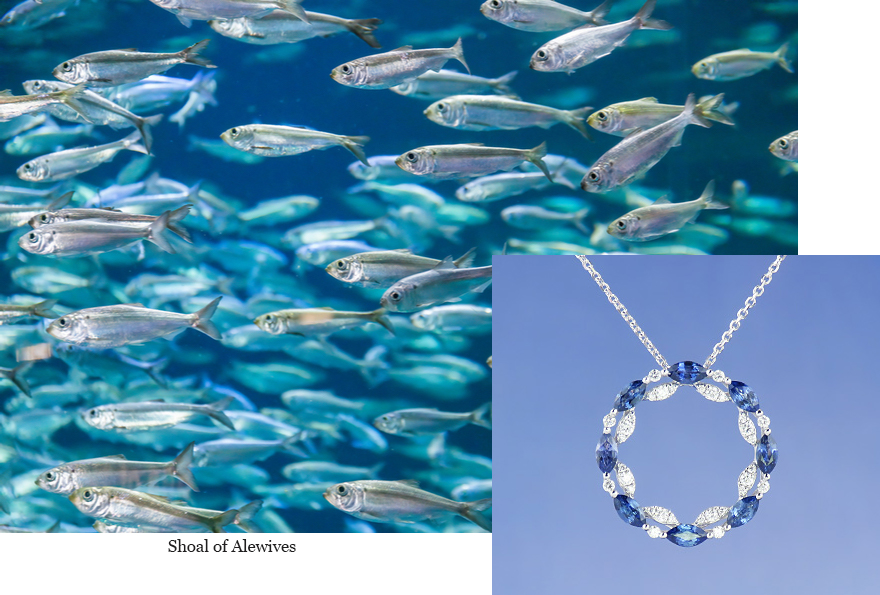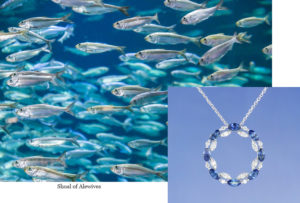
The Great Spring Migration
Sapphire & Diamond Necklace
I had read about it for years. I intended to go and then another spring would pass. We all make promises to ourselves and then one, or many things come along that seem more important. Life is short. Don’t keep putting off your dreams.
I did something radical in 2007, totally out of character; I bought one of the new smartphones…an iPhone. My girlfriend and I went to Hallowell, Maine to go antiquing. We went to Slates for lunch. I was proud of my new treasure and I explained in five minutes everything I thought I knew about this new technology.
After lunch, we walked to the southern part of town, a two-minute walk. We looked out on the Kennebec River and I said, “I’ve always wondered what those piles of rock are in the river.” I googled Kennebec River rocks and told her to watch as an answer came up, “Kennebec Indian Post of the Day: A Plummet – Tispaquin’s Revenge”.
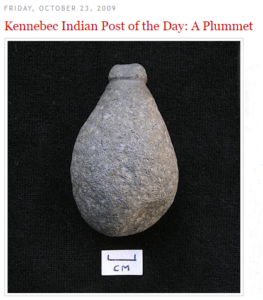
It was the wrong answer; I didn’t ask the question properly. The answer, though, fascinated me and you might say it changed my life in a minor way. The link, “Tispaquin’s Revenge” took me to an ancient American story and a contemporary story of ecology. The link was written by Douglas Watts, a champion of the natural order of things. He said his brother, Tim found a plummet at the Babcock Rapids above Augusta. I’d never heard of such a thing as a plummet, an ancient Indian artifact. He showed a photograph. I was intrigued, and because this was Hallowell, and an antique mecca, we asked around. No one had ever heard of such a thing.
We Didn’t Realize There Was
a Treasure Trove of Plummets
Just Up the River*
On that day we didn’t realize that a few miles up the Kennebec at the Maine State Museum they had a hundred of these mysterious ancient Indian artifacts. I’m digressing too far afield. Back to Douglas Watts. He was a champion of dam removal to allow rivers to flow naturally, to not block the free flow of water, and impede the migration of fish. In particular, the annual migration of Alewives is one of Earth’s great migrations. Alewives are ten-inch fish that migrate en masse by the millions from saltwater to freshwater to spawn in the spring. To put it simply, our rivers, ponds, and lakes are healthier when the Alewives are free to migrate because bears and eagles thrive, seagulls and herons feast, nature is in better balance.
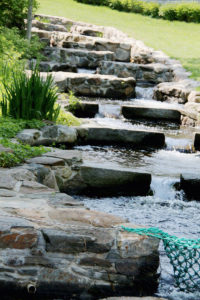
Your Invitation
This is your invitation to one of Earth’s great migrations at Damariscotta Mills. Google Damariscotta Mills Alewife Migration for more information. Keeping your carbon footprint small, you may not want to travel the world, a little trip up the coast of Maine in May might be a great substitute. There are many locations where you can see the great spring migration of Alewives in Maine. One of the best is Damariscotta Mills in Nobleboro, Maine.
Our Great Migration Necklace
Our Great Migration necklace is a beautiful circle of life sapphire and Diamond piece of jewelry. It captures the wild, free energy of the annual migration. Damariscotta Mills fish ladder has over a million fish fight their way from Great Salt Bay up to Damariscotta Lake. Our Migration Necklace is a frothy, wild splash of 32 tiny round diamonds with eight blue sapphire fish circling through, all set in white gold. An 18-inch chain drops the necklace 2-inches from your heart.

The Great Spring Migration
Sapphire & Diamond Necklace
Our Spring Migrations Circle of Life necklace possesses high flowing energy in blue sapphire and brilliant white diamonds. It’s both a beautiful piece of jewelry and a powerful reminder of the balance of life on Earth.
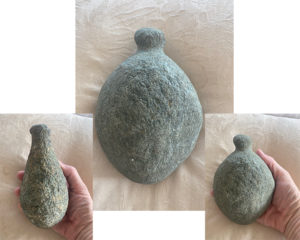
The Plummet
An Ancient American Mystery
A mysterious and common custom, 3,000 years ago, stones were sculpted and shaped smoothly with a bottle cap top. Made everywhere in America for 800 years, no one knows why, except for the clue that there was always water nearby.
Some say it marked an alpha and omega of life. The end and a new beginning. Many plummets have been found on or near Maine’s Kennebec River which appears to have been a center for this mysterious ancient practice and culture in America. -R.H.P.
To see plummets on display:
Visit the Maine State Museum in Augusta
Visit the Abbe Museum in Bar Harbor
You can see some plummets on display. They have many more hidden away.
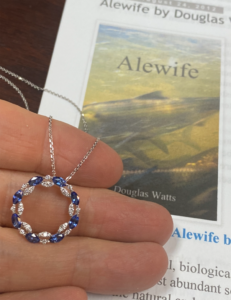
Migration and Ecology
If you’d like to learn more about the great spring migration of Alewives in New England consider the Book “Alewife”.
If you’d like to learn more about the plummet found at Babcock Rapids visit “Kennebec Indian Post of the Day: A plummet – Tispaquin’s Revenge”
*The Answer to the Original Question
We found the answer to the stone pile in the river later that day. These were logging impoundments from the great days of river logging. Places to catch various paper companies 4-foot logs. I found the answer the old-fashioned way, by asking the merchants in Hallowell.




